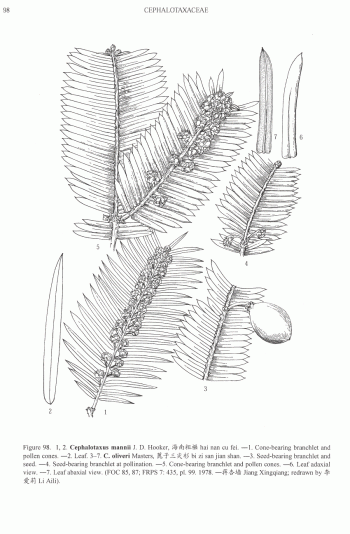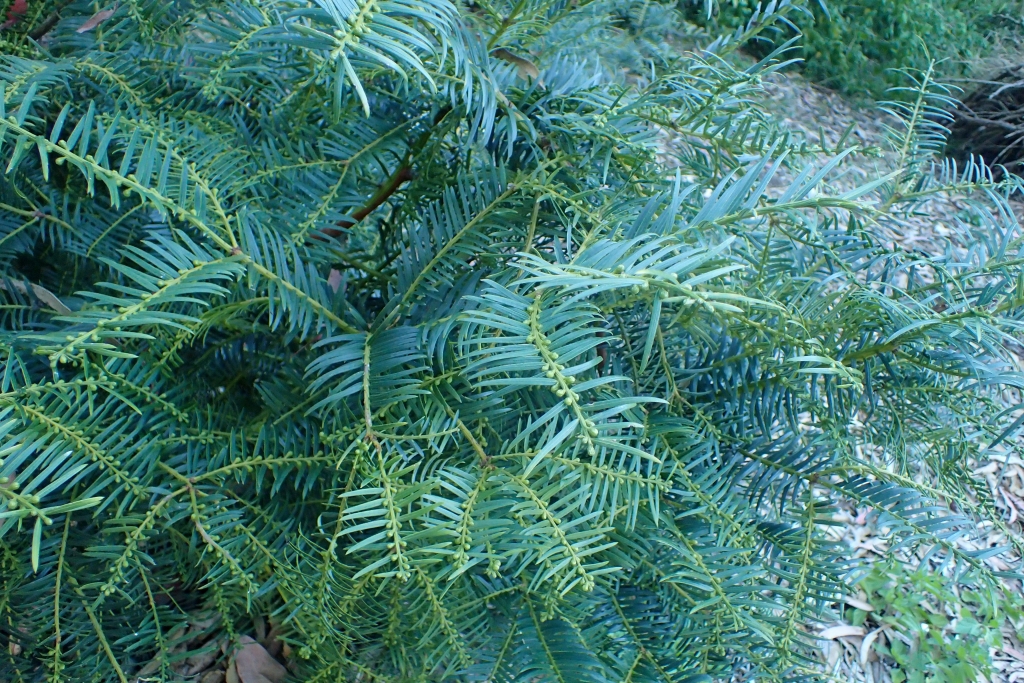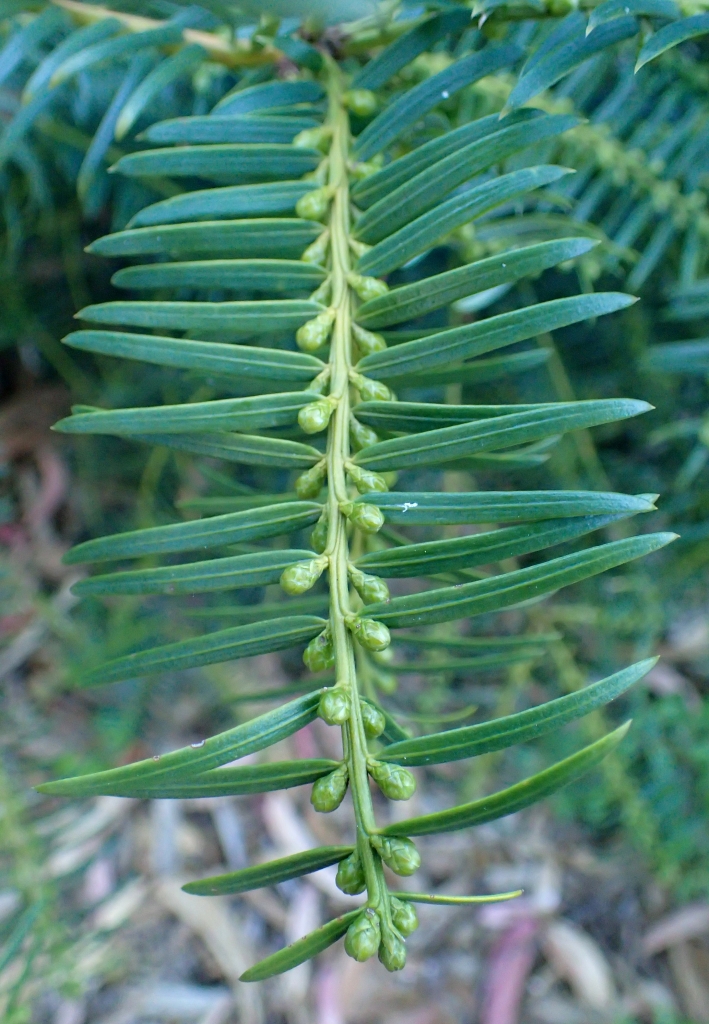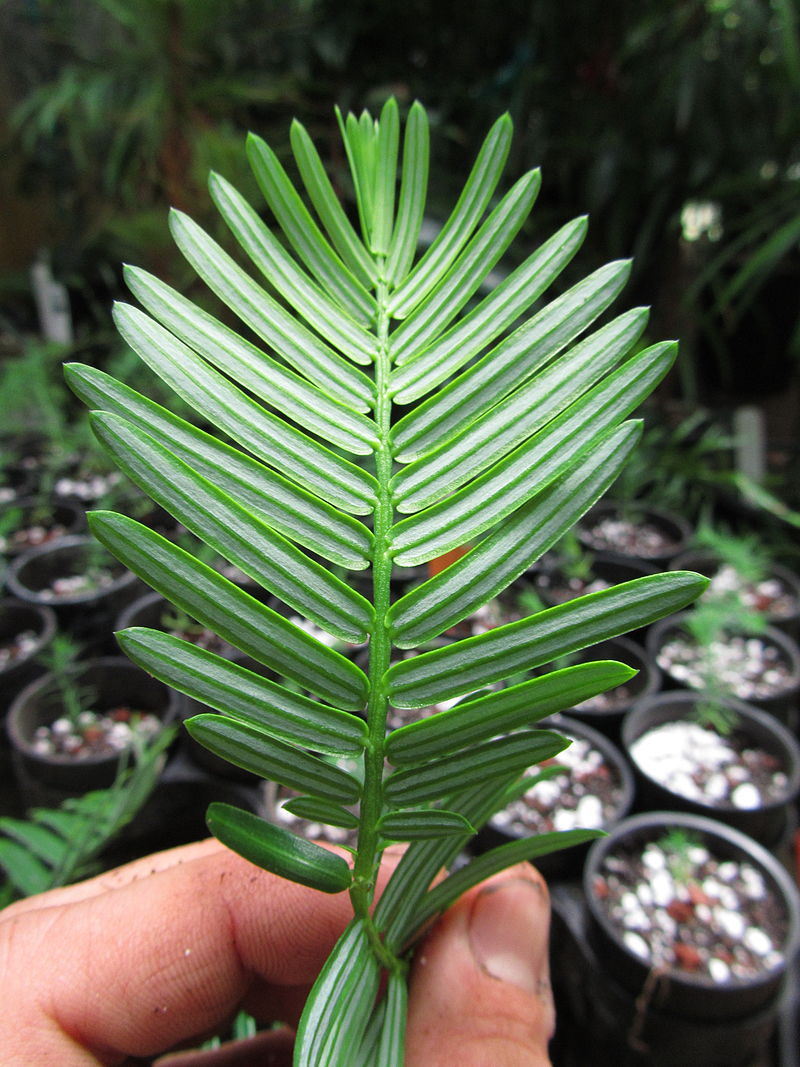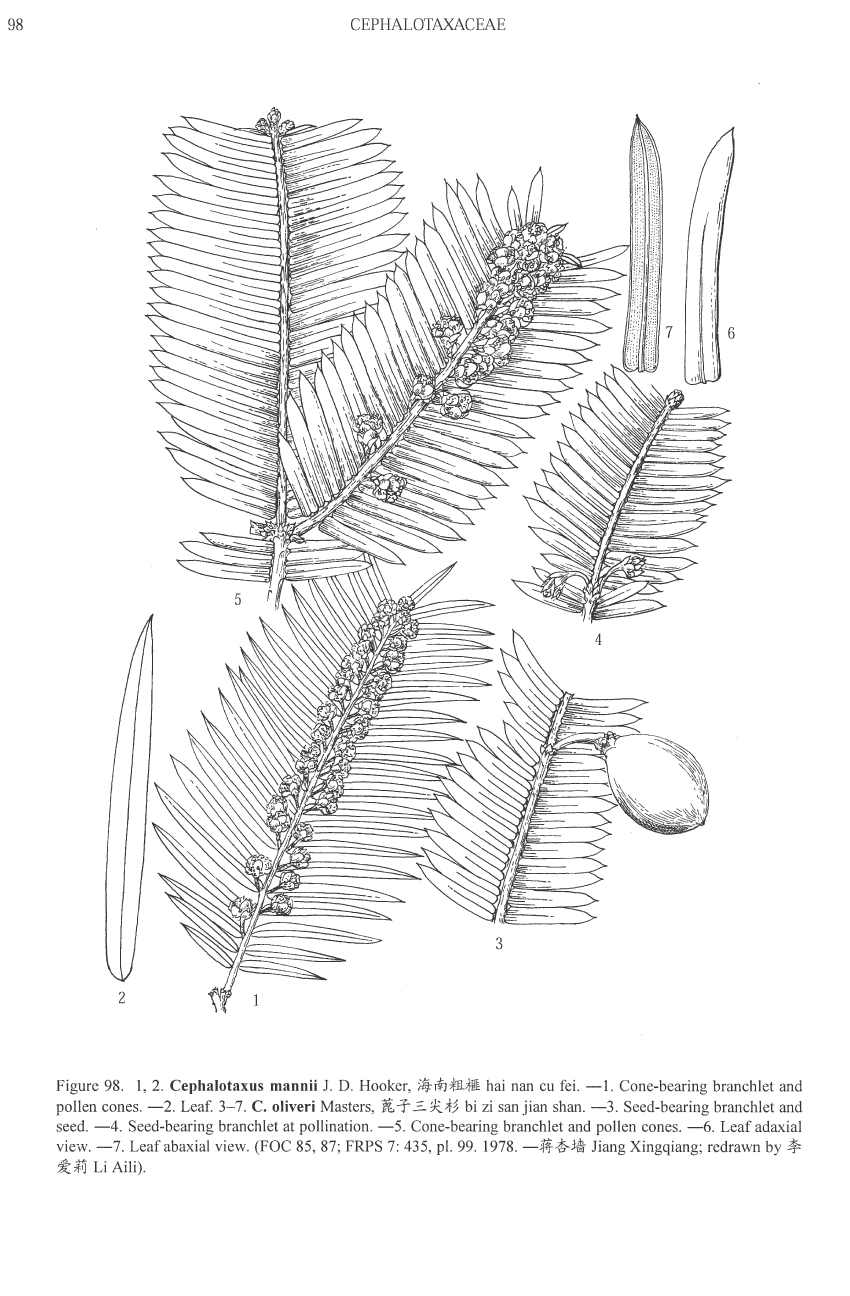Cephalotaxus mannii, as described in 1886 by Joseph Dalton Hooker (1817-1911) in Icones Plantarum 16th edition, is commonly known as Mann's plum-yew or Khasi plum-yew; as well as 西ŠŒç‰ˆçº³ç²—榧 (hai nan cu fei) in the Chinese language. The species name honors Gustav Mann (1836-1916), a German plantsman and forester who collected the type specimen in the India's Khasi Hills of Meghalya state during his career with the Indian Forest Service.
According to India's Forest Inventory and Planning Institute (1996), the timber is straight-grained with fine structure and high elasticity, rather hard, easy to work, not splitting and deforming after seasoning, and resistant to termites and insects. It is used for high quality furniture, tool handles and fine art articles. Oil from the seeds is used in painting; the seed is also used in medicine.
Description. Mann's plum-yew is an evergreen coniferous species of tree that grows to mature heights of 65 feet (20 m) tall with a trunk up to 20 inches (50 cm), in diameter, measured at breast height.
- Bark is light brown to reddish brown in color, flaking off with age.
- Twigs are elliptic or oblong-elliptic in outline, measuring 3.2 to 7.6 inches (8 - 19 cm) long and 1.8 to 3.2 inches (4.5 - 8 cm) wide, about half as wide as long.
- Leaves are borne at a 45 to 80° angle to branchlet axis. Petioles are more-or-less absent or 0.02 inch (0.5 mm) in size. Leaf blades are dark green or shining olive green adaxially, with linear or linear-lanceolate outlines, usually straight, but occasionally slightly falcate. They are flat, measuring 0.6 to 2.4 inches (1.5 - 4 cm) long and 0.1 0.16 inch (2.5 - 4 mm) wide, with leathery texture. Midveins are prominent adaxially, measuring 0.008 to 0.012 inch (0.2 - 0.3 mm) wide. Abaxially, stomatal bands are white or bluish white in color, often indistinct and green when dry because of white powder being shed. Stomatal bands measure 0.028 to 0.064 inch (0.7 - 1.6 mm) wide, and consist of 19 to 23 rows of stomata that are 2.5 to 8 times as wide as midvein. Marginal bands measure 0.004 to 0.012 inch (0.1 - 0.3 mm) wide with a very broadly obtuse or obtusely truncate base that are either symmetric or not. Leaf margins narrowly revolute. Apices are cuspidate (with leaf tapered into apex from at least middle, often from base), or abruptly and very shortly mucronate with leaf parallel-sided and a 0.004 to 0.008 inch (0.1-0.2 mm) mucro.
- Pollen cones are borne in clusters of 6 to 8 together, colored pale yellow, with globose shape, measuring 0.16 to 0.18 inch (4 - 4.5 mm) in diameter, attached by a 0.16 to 0.2 inch (4-5 mm) long peduncle, usually with at least 10 bracts. Microsporophylls number 7 to 13, each with 3 or 4 pollen sacs.
- Seed cones are solitary or borne in clusters of 2 or 3 together, attached by a 0.24 to 0.3 inch (6-10 mm) long peduncle. Arils are green initially, turning red when ripe, measuring 0.88 to 1.2 inches (2.2 - 3 cm) long and 0.44 to 0.48 inch (1.1 - 1.2 cm) wide.
- Seeds are obovoid-ellipsoid or obovoid shaped and sometimes laterally compressed, measuring 0.88 to 1.12 inch (2.2 - 2.8 cm) long, with shortly mucronate or cuspidate apices.
Distribution. This species is native to China - southwestern Guangdong (Xinyi Xian), Guangxi (Rong Xian), Hainan (Jianfeng Ling, Limu Ling, Wuzhi Shan), southeastern Xizang (Tibet), southern and western Yunnan; as well as northeastern India (Khasi, Jaintia and Naga Hills); Laos; northern Myanmar, northern Thailand, and northern Vietnam (Lam Dong), at elevations above 3,100 feet (950 m) above sea level. According to Fu
et al. (1999), "records of
Cephalotaxus mannii from Xizang and Yunnan require confirmation; they may be misidentifications of
C. fortunei var.
alpina.
In China this conifer grows in mixed forests and forested ravines at elevations of circa 3,600 feet (1,100 m) above sea level. In Vietnam it grows in subtropical broad-leaved evergreen forests. It is shade-tolerant when young, intolerant when mature and has very low rates of natural regeneration.
Hardy to USDA Zone 7, cold hardiness limit between 0º to 10ºF (-17.7° and -12.2°C).

